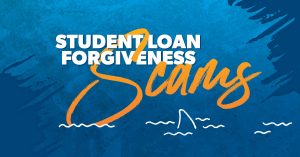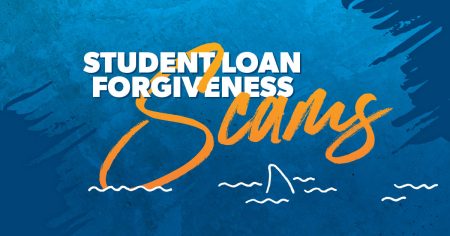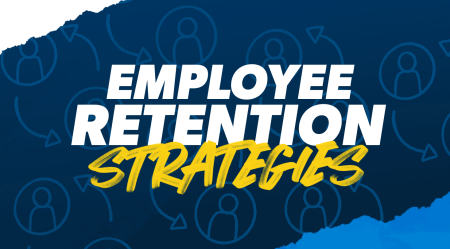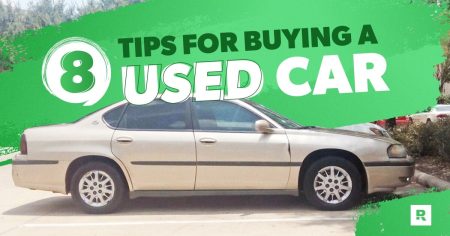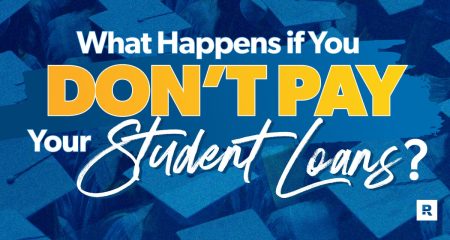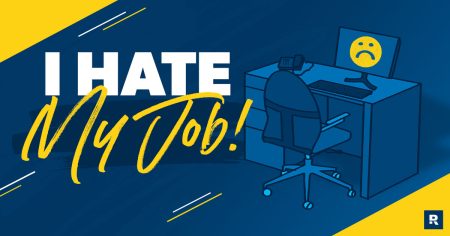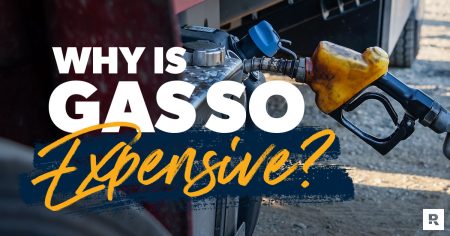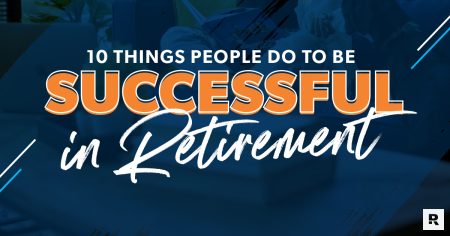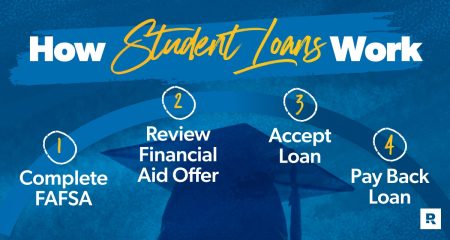Hey, we know student loans are heavy. They can squeeze the life out of your income and feel like a weight you just can’t bear. If you’re looking for student loan help, the options can seem endless. From forgiveness to forbearance to consolidation . . . but how do you know what’s helpful and what actually just slows down your progress in the long run?
We’ve got the lowdown on seven types of student loan help—the good, the bad and the ugly—and even the absolute best plan for getting rid of your student loans. For. Good.
- Student Loan Forgiveness
- Income-Driven Repayment
- Service Member Benefits
- Student Loan Deferment
- Student Loan Forbearance
- Student Loan Refinancing
- Help for Student Loan Delinquency or Default
1. Student Loan Forgiveness
Listen, student loan forgiveness sounds great, but qualifying for it isn’t as simple as you may think. And it certainly isn’t guaranteed to make your student loans disappear.
While President Biden’s plan to forgive a portion of federal student loan debt is supposed to provide some relief, most borrowers will still have a good amount of student loans to pay off afterward. And widespread forgiveness like this is most likely a one-time thing.
There are several programs that can help people get the rest of their federal loans forgiven, but you have to meet pretty hefty requirements to prove you qualify. And even if you do, very few people actually get their loans forgiven in the end.
Here are a few types of those student loan forgiveness programs:
- Teacher Loan Forgiveness. This one has several conditions you have to meet, including a five-year stretch teaching low-income students at an approved school or an educational service agency. You can’t apply for the forgiveness until after you’ve taught for five consecutive academic years.
- Public Service Loan Forgiveness. Going this route for forgiveness is even tougher because you have to work an approved job and go 10 years without a single missed payment on your student loans before you can even apply. And the success rate for PSLF is less than 2%.1 Talk about disappointing.
- Disability Discharge Forgiveness. If you have a permanent disability (proven through a physician, Veterans Affairs or the Social Security Administration), you’re eligible for a Total and Permanent Disability discharge. The process is a long one and includes a three-year monitoring period after your loans are discharged to prove you’re still disabled.
- Forgiveness Due to a Problem With Your School. Whether you’ve been defrauded by your college through misleading information or you lost money because your school closed while you were enrolled, there’s a chance your student loans can be forgiven. This only applies to federal loans though.
If any of these options fit your situation, you can start the process of applying. But considering all the time and trouble it takes to qualify (and the low percentage of people who end up having their loans forgiven), these rarely help anyone move the needle on financial progress.
2. Income-Driven Repayment
If you can’t get your balance forgiven, an income-driven repayment plan could lower your monthly payments on federal loans. How much depends on your income and family size. Here are the different types of income-driven repayment plans:
- Pay As You Earn (PAYE)
- Revised Pay As You Earn (REPAYE)
- Income-Based Repayment (IBR)
- Income-Contingent Repayment (ICR)
All these programs work pretty much the same. They cap your payment somewhere between 10% and 20% of your discretionary income (aka your income after taxes and deductions), and you keep making payments for 20 or 25 years. Whatever’s left after that will be forgiven.
Ready to get rid of your student loans once and for all? Get our guide.
But can you see the problem with this approach? Sure, you might get a reduced payment—but you’re also agreeing to keep that debt in your life for up to 25 years. That’s. Too. Long.
3. Service Member Benefits
Military service members may be eligible for several programs that help with student loans. If that’s you, here are a few of those benefits:
- Interest Rate Reductions. The Servicemembers Civil Relief Act (SCRA) limits your interest rate to 6% while you’re on active duty—and if you’re serving in a hostile area, you may even qualify for 0% interest.
- Payment Reduction. In certain situations, the HEROES Act waiver may allow you to extend your general income-based repayment options if they expire while you’re on active duty.
- Postponed Payments. For federal loans only, Military Service Deferment allows you to postpone monthly payments during and right after certain forms of active duty.
- Post-Active Duty Student Deferment. This program can allow you to put off payments after active duty if you plan to go back to school.
- National Guard Duty Mandatory Forbearance. This was created for National Guard members who don’t qualify for the Military Service Deferment.
Even if you qualify for any of these, they should not be your main plan of attack to get rid of your student loans. Don’t let an interest rate reduction or deferment be an excuse to slow down or slack off on paying off your loans quickly and getting them out of your life forever.
4. Student Loan Deferment
Another form of student loan help you may have heard of is student loan deferment. And while we recommend you do all you can to avoid deferment, you need to know what it means.
A deferment is a pause on your student loan payments. But—and don’t miss this—in many cases, the interest continues to accrue (aka build up) while you’re not making payments. The interest gets stacked on top of what you already owe. Yeah—it’s a really bad deal.
People could be eligible for a deferment if they’re:
- In rehab
- In a graduate fellowship program
- Going back to school at least half-time (but please don’t enroll in more school if you’re just doing it to avoid student loan payments. And if you do head back, whatever you do, don’t pay for it with even more debt!)
- Actively serving in the Peace Corps
- Unemployed or underemployed while seeking full-time work
In most cases, a student loan deferment is a quick fix that creates a bigger problem in the long run. It’s definitely not the ultimate solution to your student loan debt problem.
5. Student Loan Forbearance
Forbearance is a pause or reduction of your student loan payments. This word may sound familiar because during the pandemic, all federal student loans were placed in automatic forbearance. But under normal circumstances, forbearance works very differently.
A person has to request a forbearance if they’re unable to make payments because of financial difficulties, medical expenses, a change in income, or some other reason their loan servicer may approve. The key word here is approve—it’s up to the loan servicer to determine if you can actually get the forbearance.
Plus, forbearance has the same problem as deferment, only worse: The interest always adds up when your student loan is in forbearance. (During the pandemic, the interest rate was at 0%, but that was an exception—not the norm.) You can choose to keep paying the interest, which is a lot better than letting it grow and watching your balance go up. But how much help is that really if you’re in a tough financial spot?
Again, a forbearance doesn’t get the debt out of your life. It just puts a pause on it. A pause that makes the amount you owe grow over time. No. Thank. You.
6. Student Loan Refinancing
Now, this is a student loan approach we can actually get behind, if and only if it makes sense for you. The basic idea behind refinancing is a win-win: You might be able to lock in a lower fixed interest rate (which means you pay less over time) or a better term (which means you pay off your student loans quicker). Or both!
But there are several things that must be true before you even think of refinancing. Only refinance if:
- It’s 100% free to refinance.
- You can get a lower interest rate.
- You can keep a fixed rate or trade your variable rate for a fixed rate.
- You don’t have to sign up for a longer repayment period.
- You don’t need a cosigner.
- You haven’t recently declared bankruptcy.
- It will actually motivate you to pay off your student loans faster.
7. Help for Student Loan Delinquency or Default
Unfortunately, you can’t just ignore your student loans and not pay them—at least not without consequences. Falling into delinquency or defaulting is a worst-case scenario for your student loans. What do these terms mean? A loan is delinquent the mome
nt you miss a payment. The delinquency ends when you get up to date on payments.
If your loan stays delinquent (you continue to not make payments) for 90 days or more, your loan servicer will report it to the three major national credit bureaus, and you’ll get a nasty hit on your credit score.
If you go too long without making payments, your loan will move from delinquency to default. The timeline for this depends on your lender, but with most federal loans, you can expect your loan to go into default after about nine months of nonpayment.
Defaulting on your loans brings all kinds of trouble. You might be looking at lawsuits and garnished wages (when part of your paycheck is taken to pay the debt), or the lender may demand you pay the remaining balance immediately. On top of that, if you default on your student loans, you won’t get things like the Child Tax Credit either.
If you’re afraid you’ll default on your loans once payments start back up, don’t give up hope! Contact the billing company for the loan right away and let them know why you can’t make your payments. It may not be a fun conversation, but ignoring the problem won’t make your situation better.
And if you’ve already defaulted on your student loans, there’s some good news for you! Back in April 2022, President Biden announced an initiative called Fresh Start to help borrowers start the repayment process back in good standing.
Not all the Fresh Start benefits are available yet. But you won’t have to worry about collectors hounding you or having your wages garnished. Watch out though—one “benefit” under this initiative is being able to take out more government loans. And trust us, that’s the last thing you want to do if you’re already struggling to pay the loans you currently have. Use this fresh start to boost your payoff progress, not slow it down.
Speaking of making progress, there are two main ways you can get back on track if you’ve defaulted on your student loans: rehabilitation and consolidation.
Student Loan Rehabilitation
This is a pretty simple federal program designed to help you keep your Four Walls (food, utilities, shelter and transportation) covered while you slow way down on your school loans. You’ll likely need to show proof of income and expenses. And depending on the numbers, your loan servicer will figure out your monthly payment. (Your payment could drop to as low as $5 a month.)2
The goal with rehabilitation is to get out of default by making nine on-time payments within 10 consecutive months. Once you do that, the default status will be removed from your credit report. But remember, this is just a temporary plan to help you get back on your feet—not something to depend on long term.
Student Loan Consolidation
The other way to end a default is through student loan consolidation, but this is only available for federal student loans. The word consolidation comes up a lot when you’re talking about debt relief, but we want you to hear one thing loud and clear—student loans are the only kind of debt consolidation we’d ever recommend you consider.
When you consolidate, your new lender pays off your old loans, putting an end to the default status on those loans. You get a new loan structure, including a fixed interest rate and maybe even a lower payment.
But consolidating usually extends the length of your loan, which means you’ll actually pay more over time. So, it’s mostly a question of motivation. Would you rather attack several small loans (with possibly variable interest rates) or one larger loan (with a fixed rate)?
Just remember: If you do choose to consolidate your student loans, you need to pay more than the minimum payment. Seriously, you don’t want to be in debt any longer than you have to be!
Avoid Student Loan Relief Scams
If you’re struggling with your student loans right now, you need to be careful of those punks who are all about taking advantage of your situation for their profit. It’s disgusting. But it happens.
One of the easiest ways to avoid scams (including student loan forgiveness scams) is to not believe every website claiming to help you with your loans—and definitely don’t give out your personal information willy-nilly. When in doubt, the Federal Student Aid website is your source of truth (especially for applications).
Also, watch out for anything that charges you fees to help you with your student loans. All of the federal programs we talked about are available for free. And even refinancing (the right way) has no up-front charge.
And steer clear of “debt settlement” businesses. They dress up like debt consolidation, but the two are not the same. Most debt settlement companies make big promises about helping reduce or eliminate your debt, and they charge you big fees up front.
But what happens next? They often take your money and run, leaving your student loans unpaid, your bank account emptier thanks to their fees, and your life in a heap of trouble.
Trending Topics in the News on Student Loan Help
Want to read more trending topics on student loan help? Check out these articles:
Student Loan Forgiveness Application: Everything You Need to Know
Biden’s Plan to Cancel Student Loan Debt
Can Joe Biden Forgive Student Loans?
Student Loan Relief Is Ending in 2022
The Best Option for You
Okay, so there’s all the info. But you still need help with your student loans. Where do you even start?
Take a deep breath. These loans feel massive, but they will not defeat you. You have what it takes to get out from under the debt and move forward with your life. You really do.
But listen, the solution is not running after programs that might help or waiting on the government to forgive your student loans. The solution is you. You can pay off all your student loan debt yourself—and faster than you thought possible.
Get on a budget. You need to see what your money situation really is. You might be surprised by how much you’re spending in some areas. Make sure you’re covering the essentials, then tell the extras goodbye (for now) so you can focus your money on getting out of this debt.
We know you’re stressed, and budgeting might seem like one more thing to stress about, but it doesn’t have to be hard or horrible. Try out our budgeting app, EveryDollar. It’s easy to use and free.
Check out our guide. If you’ve still got questions or feel worried, remember: Knowledge is power! Check out our Guide to Getting Rid of Your Student Loans. You’ll get the information—and the encouragement—you need right now.
No matter what, we want you to pay off your student loans. Get them out of your life so you can move on with your life! To do that, you’ll need that budget and some belief. In yourself.
Listen, we believe in you. It might be hard, but you can (and you will) be student loan debt-free. You. Will.
Read the full article here
